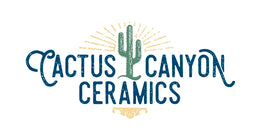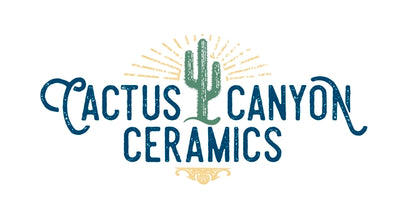Upon arriving to Sevilla, Spain about six years ago, my wife and I used several tourist guide books to explore the city. Prominent in the guide books were references and information about Flamenco. There are many special things about Southern Spain, and one of them is flamenco. Flamenco is part of the fabric of life here and as a visitor, you can skirt around the edges of it, or you can delve deeply into the culture and music – depending upon your tastes and energy level.
For a while, my wife and I were intent upon finding some of the impromptu flamenco “happenings” that occur in the wee hours of the morning, when sangria, beer, tapas and passion build until music becomes the outlet at the corner cafes. After several late night forays (and the mornings after), we decided we would leave this particular investigation for younger folks. Now instead, we go to a concert now and then, or with a bit of planning we enjoy plays or staged dances. Since flamenco is so much a part of Southern Spain where I work with factories and workshops that produce hand painted Spanish pottery, I decided to do a blog post on flamenco.
Flamenco is different from other styles of music. For me the suddenness and the passion are what characterizes flamenco music (passion more than anything else). Like the early blues and jazz, rhythm and words are important, more than the melodies and harmonies. Each performance is unique and has a strong element of spontaneity.
Flamenco requires exertion; physical and creative exertion. In the middle of the summer, if you are sitting close to a flamenco dancing event, you can see the sweat and sometimes feel it as the performers whirl, clap and stomp. The performances are energetic and there is an eagerness as the musicians and dancers lose themselves to the music they are creating. You can see them draw their motivation from the passion that lies in their blood and their tradition, it is enchanting to watch and listen to.
Present day flamenco comprises three things; singing (cante), dancing (baile) and guitar playing (toque). There are four major groups of flamenco: jondo or grande flamenco, intermedio flamenco, chico flamenco and mainstream flamenco.
Jondo or grande flamenco is the most genuine form of flamenco. Of all types of flamenco this is the most hard to properly interpret and understand. Those who perform in this style are considered the higher class of Flamenco. One must have a true knowledge of flamenco and be in touch with his deepest feelings to be able to adequately convey those feelings to the audience.
Intermedio Flamenco comprises of styles that incline toward flamenco grande yet the intermedio is not as hard to perform and not as moving.
Chico Flamenco is exciting, delicate and graceful and is typically not emotionally intense. This style of flamenco for the most part comprises of yelling, stepping and quick movements.
Mainstream flamenco is the joint effort of each of the three structures above and is not a pure form of Flamenco. This is the type of flamenco that is usually performed for visitors at centers such as Museo de Baile Flamenco in Sevilla.
Flamenco has roots in Andalucía, a large southern province of Spain. It developed from the cooperation of numerous cultures including the Spanish, Jewish, Moorish, and particularly the Gypsies. It is the Gypsies that from their arrival on Spain on the 15th century shaped this form of music day by day.
The gypsies had constantly moved from country to country and they used to take the local music and make their own variants from it. Music was essential to their lives and celebrations. Everything they needed to begin to make music was a voice, and they soon began to use hands and feet to add rhythm to the songs. Music improvisation was always a part of their culture and in Andalucía they discovered a superb ground for their music. Flamenco was more than music. It was feeling, love, torment, wrath, enthusiasm; It was a legacy passed on from generation to generation.
And to this day Flamenco is not only a style of music, tune and dance movements in Andalucía; it is rather a lifestyle that impacts the everyday life. The craft of flamenco is an outward articulation of people’s deepest and most significant feelings. Flamenco is more a tradition than it is music.
Instruments that are most commonly used in flamenco are: the Spanish guitar, cajon, castanets and of course palmas or handclapping. The handclapping has dependably been a key instrument that accompanies the singing and the dancing of flamenco. People who perform this are called palmeros.
Spanish Guitar: The primary instrument to go with the flamenc o singing was the guitar. These days, it is still the most vital part of flamenco. The thing that gives the flamenco guitar it’s distinctiveness is the inclusion of accompanying harmonies: Am, G, F and E in the Andalucian scale. The Spanish guitar has many similarities with the classical guitar and has developed over time. Today, the guitar is a really important part of the flamenco music and is also used as a solo instrument.
o singing was the guitar. These days, it is still the most vital part of flamenco. The thing that gives the flamenco guitar it’s distinctiveness is the inclusion of accompanying harmonies: Am, G, F and E in the Andalucian scale. The Spanish guitar has many similarities with the classical guitar and has developed over time. Today, the guitar is a really important part of the flamenco music and is also used as a solo instrument.
Cajon: Brought into Flamenco music in the 1970s by Paco de Lucia, a cajon is an extraordinary box where the player sits while slapping the front and top edge to create percussive sounds. The lower notes are played either with the side of the clench hand or the heel of the palm. The top within the cajon is lined with catches, much like a catch drum. The instruments origins are in Peru.
Castanets: Castanets are a hand percussion instrument produced using two inward “shells” that are  tied together by a string. The shells are made of stone, wood or fiberglass. Much like with claves of other Spanish music, the player strikes the two shells of the palillo together, regularly in a monotonous example, to make a shrill and pointedly differentiating clicking sound. Typically two sets of palillos are utilized with each pitched uniquely in contrast to the other.
tied together by a string. The shells are made of stone, wood or fiberglass. Much like with claves of other Spanish music, the player strikes the two shells of the palillo together, regularly in a monotonous example, to make a shrill and pointedly differentiating clicking sound. Typically two sets of palillos are utilized with each pitched uniquely in contrast to the other.
Paco de Lucia, one of the greatest flamenco artists of all time passed away a little more than one year ago. The passing had tremendous impact here in Southern Spain. Paco died from a heart attack at the age of 66, on 25 February 2014, leaving behind a legacy that a lot of flamenco artists and his music lovers will cherish for many years to come.
Paco de Lucia, who’s real name was Francisco Sánchez Gómez, was born in December 1947, in the city of Cadiz in Spain. His father Antonio Sánchez Pecino who was also a guitarist taught him the art of playing the guitar. His music was influenced greatly by Sabicas and Nino Ricardo, both being great musicians of the time.
Paco de Lucía grew up in the middle of a Flamenco society. Before long, important artists started to work with him. He recorded the first album together with his brother Pepe in 1962. A short time later, he began working with well-known artists, like Fosforito, El Lebrijano and Camarón. Together with Camaron, they put flamenco on the stages of the world’s biggest theatres and recording studios, which up until then was confined on cabarets and small cafes and amateur studios.
The impact of his music went far beyond the universe of Spanish flamenco. For example, Paco worked with Bryan Adams on one of my all time favorite songs “Have you ever really loved a woman”. If you take the time to watch the clip, I love how Paco accompanies Bryan Adams, …he effortlessly contributes beautiful guitar playing to a wonderful performance.
Later in his career, Paco continued to revolutionize the genre in new directions. He brought into his music new instruments such as electronic bass and Peruvian cajon. Paco de Lucia won many prizes such as Latin Grammies and many other prizes from different Flamenco Competitions.
Paco de Lucia will be missed. For a great youtube video in Spanish about Paco, follow this link.
Below are a selection of several youtube videos featuring Paco de Lucia and flamenco music.
La Barrosa– Paco de Lucia
La Barrosa (The Girl with Spots) is a flamenco piece by Spanish virtuoso guitarist Paco de Lucía. It is one of his best known and acclaimed works. The piece is named after Playa la Barrosa, a 6 km long shoreline in Chiclana de la Frontera, Cadiz. He has performed it all over the world incorporating an execution before the Plaza Mayor in Madrid in 1996 and broadcast broadly on TVE1.
Rio Anche– Paco de Lucia
“Río Ancho” is a Spanish flamenco guitar jazz piece that consolidates flamenco and has jazz impacts. The track initially included on Paco de Lucia’s 1976 collection Almoraim.
Sevillanas by Carlos Saura
Recorded like a narrative, “Sevillanas” comprises of eleven short exhibitions by Spain’s most celebrated flamenco dancers, vocalists and guitarists. Carlos Saura, who is famous for his movies like “Blood Wedding” and “Carmen” here gives an in-depth documentary of the flamenco played and danced in Seville.
Las Montoyas – Boda Gitana en la playa
Beautiful Flamenco singing at a wedding on a beach in Andalucia. The dancing and singing are captivating to the very core! It is so beautiful, emotional and energetic.
———————————————————
This blog post was researched by Njomeza Ahmeti and co-written by Steve McCann and Njomeza Ahmeti. Thanks so much for your interest in Spain, Andalucia and hand painted Spanish pottery.



